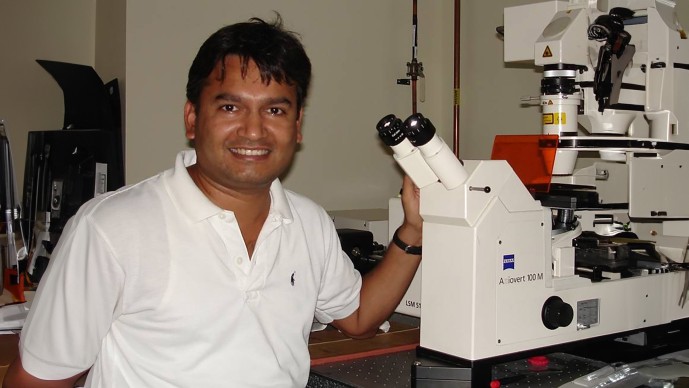Explore the Basis of Latency in Tuberculosis (Round 2)

Roadblock:
One-third of the world’s population is estimated to be infected with Mycobacterium tuberculosis. However most individuals do not show clinical symptoms of disease, a form of infection that is commonly known as latency. Latent TB represents a vast reservoir from which active disease and subsequent transmission propagates. Interventions that identify and eliminate latent infection might break the cycle of disease transmission and reverse the TB epidemic. Current approaches to detection, prevention, and treatment of latent infection are inadequate, and rational development of new tools has been limited by poor understanding of the fundamental biology of latent TB infection.
The scientific community has described the fundamental biology of latency in a number of ways, yet all are incomplete in some way. For example:
- Latent TB can be defined by the presence of T cells that respond to specific TB antigens. However, this definition may include individuals who have eliminated the pathogen in addition to those who continue to harbor viable bacteria. With current tests there is no reliable way to distinguish these different possibilities. Some individuals may be capable of eliminating infection or may be able to prevent reactivation of TB. An understanding of the immune and other containment mechanisms employed by the host, or the specific host genetic background that is resistant to establishment of a latent infection, could suggest novel approaches to intervention.
- A body of evidence suggests that latent M. tuberculosis is contained within well-structured granulomas in the lungs of infected individuals, but there remains the possibility that other reservoirs exist. There is no means to detect and localize very small numbers of individual bacteria in a person harboring latent infection. Highly sensitive tools could allow this reservoir to be monitored to identify host factors critical for maintenance of the latent state, and determine the effect of novel treatments aimed at eliminating the pathogen.
- Following infection, M. tuberculosis may adapt in specific ways when it encounters a particular environment or environmental signal that leads it to enter the latent state. Different forms of the organism have been described, but there is little evidence for a specific state that correlates with long-term survival, or propensity to reactivate in humans. Most studies have been conducted in vitro or in animal models. There also exists the possibility that infection with certain strains of M. tuberculosis is more likely to lead to a latent infection.
- Few models exist in which we can model true latent M. tuberculosis infection. In the most commonly used system, the mouse, latency must be induced by the use of drug therapy. Alternative approaches to, and validation of, models that closely mimic human latent infection are needed.
What We Are Looking For:
The goal of this topic is to stimulate new approaches to the study of the phenomenon of latent TB infection. We seek proposals that are "off the beaten track," significantly radical in conception, and daring in premise.
A few of the many options to be considered include:
- New approaches to distinguish different forms of latent TB and identify groups at greatest risk of disease reactivation;
- New hypotheses about the underlying molecular mechanisms and other biological processes that enable M. tuberculosis to enter, maintain, and exit from the latent state, including the use of genome-wide manipulations to identify bacterial or host genes involved in these processes;
- Methods used to study the latent phase of other infectious agents or the factors influencing eukaryotic cell quiescence that may be applicable to the study of TB latency;
- New chemical or immunological methods to prevent entry, maintenance, and/or exit from latency;
- New methods to locate and quantify latent bacilli using biophotonics and bioimaging systems;
- Comparison latent TB to analogous biological situations such as stable coexistence of commensal microbes or granuloma formation in cancer;
- Formulation and testing of models of latent TB that include periodic cycling between phases of bacterial replication and dormancy;
- The articulation and initial testing of new hypotheses; application of approaches employed successfully to study latency or quiescence in other systems; or the application of new methods or tools, which open new lines of inquiry or interventions not previously possible.
For this topic, we will not consider funding for:
- Explorations of active disease that are not clearly and uniquely relevant to latent TB
- Explorations of drug-induced persistence;
- Explorations of current hypotheses (for example, that M. tuberculosis latency is an adaptation to hypoxic conditions in closed lesions), unless these involve the use of substantially novel technologies that have not previously been used to study TB;
- Explorations of novel biological mechanisms of active disease or actively-growing M. tuberculosis cells that fail to establish a definite link to latency;
- New drug, vaccine, or diagnostic discovery research that does not offer a significantly innovative approach to addressing the phenomenon of latency.